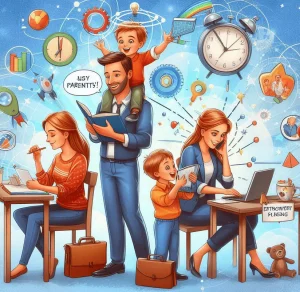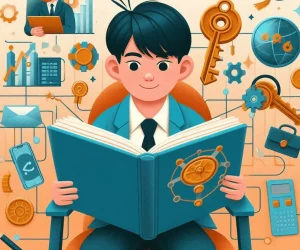There is no standard definition for “Copyright Awareness”. However, some critics have argued that awareness can only be defined in the light of what is being manifested in all forms of perception, knowledge and consciousness. In each expression, awareness is revealed as the ability to perceive (perception), know (knowledge) or the state of being conscious (consciousness).
Simply defined, awareness means you aware of something. Let us say “I am aware of road accidents” it is qualified as “Road Accident Awareness”. Similarly, when “I am aware of copyright”, this also is “Copyright Awareness”. This means whenever there is awareness of something, that thing becomes the qualifying subject for awareness.
On this wise, copyright awareness is knowing that copyright exists and having knowledge about it. It is the state of having conscious knowledge about copyright in a perceived manner. When users of copyright materials exhibit this sense of awareness in an educational institution, it gives authors the opportunity to enjoy the economic value of their works and motivates their authorship.
Copyright awareness can be developed when conscious efforts are made to bring it into fruition. For instance, when copyright notices are displayed at various points where copyright materials are mostly used.
The importance of copyright awareness can be notice in its absence. That is to say that the absence of copyright can be noticed when there is the problem of uncontrolled copyright infringement activities such as illegal photocopying, plagiarism and piracy within an academic setup.
Awareness in all sphere of life is very challenging. In the same vein, Awareness of Copyright Protection has also remained a globally controversial aspect of copyright laws in respect of works eligible for copyright protection, works not protected by copyright and authors’ protection under the copyright protection. This, however, reveals that a lot of people have little or no knowledge in this regard.
On the other hand, Awareness of Copyright Infringement (ACI) can be said to be the awareness that is created when people become aware, conscious, alert, and responsive that unauthorised use of works that are copyrighted is prohibited. Some scholers argued that before we can discuss what constitutes Awareness of Copyright Infringement (ACI), it’s probably a good idea to lay out what specifically are the rights that are granted by copyright law that are likely to be infringed. For instance, in Ghana, according to Bosumprah (2009), “copyright is infringed when a work protected by copyright is used in any of the following ways without any permission from the copyright owner:
- Reproduction, duplication, extraction or importation into the country not for personal use but for commercial purposes.
- Distribution of the work for sale in Ghana”.
This is because a work exploited in the above mentioned manner may be prejudicial to the honour or reputation of the author. This is why section 41 of the Copyright Act, 2005 (Act 690) regards an act contrary to the rights of an author as provided under sections 5 and 6 as infringement of copyright. So, since the copyright owner has the exclusive right to do all of those things (or to permit others to do them), infringement can happen when someone does any of them without the copyright owner’s permission (Davidson, 2010).
Davidson (2010), however agrees with other scholars that “the majority of copyright infringement suits involve unauthorized… ”
- Reproduction (as in copying a work) through photocopying, and this according to Panethiere (2005), is one of the common ways of infringing copyright in literary works.
- Distributing (as in copies of the work) through piracy. According to Panethiere (2005) this happens through unauthorised manufacturing and selling of works in copyright – what Osman (2010) regarded as Counterfeitingor the creation or distribution of imitations of genuine works with the intent to deceive the public about their authenticity.
- Use of someone else’s ideas or words, as in plagiarism, or using someone else’s ideas or words without properly crediting the source, Osman (2010).
Further to this, Panethiere (2005) argued that
“itis not necessary for a whole work to be reproduced or for more than one reproduction to be made for an infringement of copyright to occur. An infringement of copyright occurs so long as a substantial portion of a work is reproduced or other copyright use is made of it”.
This is because what is a substantial portion is often subjected to a qualitative rather than a quantitative test. It is the quality or essence of what has been taken rather than the amount that is taken that will often determine whether the portion taken is substantial or not.
REFERENCES
Bosumprah, B. (2009). The Rights and Responsibilities of the Media under the Copyright Law.
Davidson, J. (2010). What Constitutes Copyright Infringement and How Is It Decided? IP Registration and Enforcement Blog. An ongoing discussion of intellectual property and entertainment law issues.
Osman, I. (2010). The Scope of Copyright Law.
Panethiere, D. (2005). The Persistence of Piracy: The Consequences for Creativity, for Culture, and for Sustainable Development. UNESCO e-Copyright Bulletin. (UNESCO).






More Stories
One Quote From Each Professor That Perfectly Sums Up Their Personality
New ED-Commissioned Study on ESEA Provisions that Protect Students
Lisa Nielsen: The Innovative Educator: 5 Pandemic Learning Gains